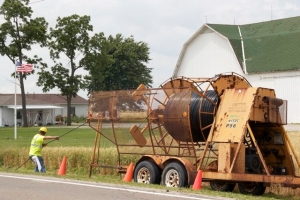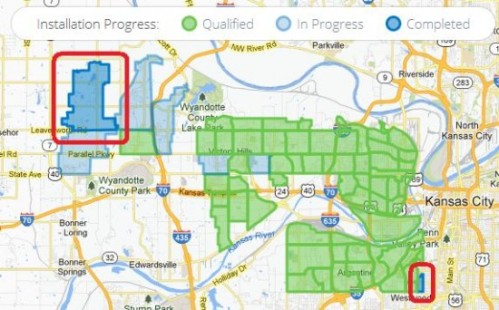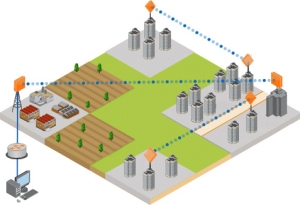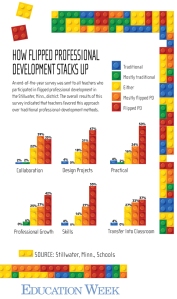Category: Uncategorized
FCC Still “Experimenting” with Rural Broadband
How Will US Schools Achieve Gigabit Broadband? Hint: It Won’t Be With Fiber
Fiber falls severely short for gigabit broadband in for a majority of US schools. Something else is needed.
Optical fiber is the method people commonly think of for connecting to gigabit-speed broadband Internet service. After all, it is the predominant carrier method for nearly all metropolitan areas, and has been the foundation of broadband in the United States. Once buried, laid and “lit”, optical fiber provides a tremendous amount of capacity that can satisfy demand for a long time, and it’s easily shared among adjacent buildings.

When we look at the fiber distribution in the United States, we see the majority of the fiber is in the “NFL” and “NBA” cities — major metro areas where there is a high density of corporations. This “large business led” penetration of fiber in cities means other metropolitan institutions, colleges, hospitals, and even private residences, can piggy-back onto these fiber networks and enjoy their benefits.

What about schools? Schools do not have the option of locating in major fiber cities like corporations do. Schools are in the communities they serve, whether those are large cities or small towns. Once we move beyond major US cities, we notice some significant problems with fiber. The costs of laying fiber to provide broadband service are prohibitively expensive and labor-intensive. The digging, trenching and construction would be hugely disruptive to residents, local traffic and businesses, not to mention natural environments.

The Federal Government recently called for gigabit Internet service to 98% of schools by 2018. Given these constraints, how is this going to get done?

What about something like Google Fiber? Well, while what Google is doing is fantastic news for the people living in the areas it is lighting up with Fiber-To-The-Home, however, as this article points out, even Google feels the harsh economic realities of fiber’s limitations, and is severely limiting its fiber rollout.
Look at the Fiber Availability Map for Google Fiber service in Kansas City below. Only the red-circled areas are getting gigabit service. The rest of the map is not.
Clearly the US is not going to get there with fiber, or any other physical, land-based technology. A different approach is needed.
The perfect technology would be quick and inexpensive to deploy, minimally intrusive to surroundings and the environment, and of course be market-proven at providing reliable gigabit broadband for schools.
Point-to-point wireless offers all of those characteristics and more. Deployment costs a fraction of what fiber does and can occur in days instead of months. Point-to-point (P2P) wireless uses microwave radio technology, and works over clear line-of-sight between two locations. P2P antennas are mounted on the roofs of buildings or on towers to allow them to transmit above treetops and other structures.
A single P2P wireless link can offer gigabit speeds over a distance of 30 miles. Multiple links can be strung together to span greater distances. Deploying a P2P network over tens, or even hundreds of miles can be accomplished in a matter of weeks and months.

Even though fiber is in the ground, it is far from problem-free. Service disruptions due to cuts in fiber lines are an all-too-frequent condition, and the design of fiber networks expose users to breaks in fiber many miles away. Most large corporations and nearly all data centers utilize two or more fiber connections to their sites to guard against just such an outage. Many are now considering backing up their fiber with point-to-point wireless due to its high reliability and lower likelihood of disruption. The mean-time-between-failures (MTBF) of leading P2P wireless systems is in excess of 100 years.
You might be thinking, “Cuts or no cuts, point-to-point wireless just doesn’t have the capacity required for today’s networks.” This is another common myth; P2P wireless speeds have risen very quickly over the past few years. Today’s P2P technology provides impressive long-haul gigabit capacity. Modern point-to-point systems also employ the same QoS and traffic shaping available on advanced cable and fiber networks to preserve the quality of the connection by automatically lowering the bandwidth. The system can automatically raises bandwidth when signal strength returns. This feature makes P2P wireless suitable for latency-sensitive applications like voice, streaming video, and high-definition videoconferencing.
A peer-to-peer wireless system layout showing a metro-to-rural connection.
Each link can span up to 30 miles and deliver Gigabit+ speeds.
A majority of cellular carriers rely on P2P wireless for the massive data requirements of their high-speed cellular networks. Police and fire organizations also rely on P2P networks for emergency communications and to expand the range of their VHF/UHF handheld radios across long distances – sometimes providing coverage across entire counties. It is worth noting that the price of P2P radios has come down by more than 50% over the last year, making for some very compelling cost comparisons against physical networking solutions where cost-per-mile continues to increase every year.
The ConnectED initiative will, within five years, connect 99 percent of America’s students to the digital age through next-generation broadband and high-speed wireless in their schools and libraries. The President is calling on the Federal Communications Commission to modernize and leverage existing programs, as well as the expertise of the National Telecommunications and Information Administration to deliver this connectivity.
Point-to-point wireless offers much greater value to schools that are looking for cost-effective, reliable, scalable, fast-deployed solutions to meet growing needs for bandwidth. With encroaching demand for bandwidth by 2018, the time to begin designing these networks starts now. Solving the problem of “how” is much easier once P2P wireless is included as an option. Connecting schools to broadband is the mandate, and the top priority. Doing so quickly, reliably and cost effectively will free up precious time and money that can be better spent on other investments that will further enhance students’ educational experience.
Minnesota SD uses flipped learning for PD for teacher tech skills.
Is this a good way for teachers to experience the other side of flipped learning, or a bust?
Although teachers are still warming up to the idea of watching videos to learn, the technology-integration specialists have noticed an appreciation among them for being able to determine the direction of their own professional development.
Related articles
- Flipped Classrooms, Flipped Professional Developement (howtolearn.com)


